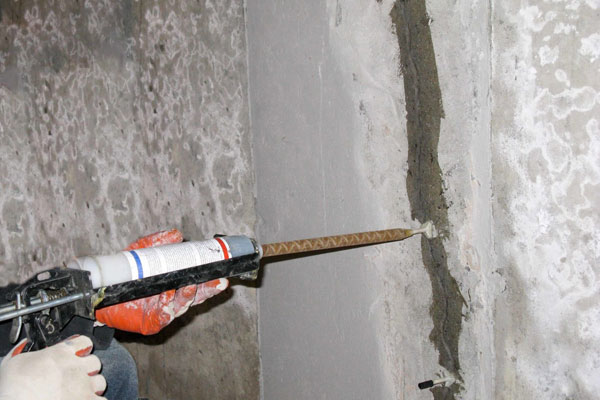Injection grouting is a retrofitting technique of application of new material in cracks/voids/honeycombs in concrete surfaces. The system involves filling Cement slurry or waterproofing chemicals for reducing crack, voids, and honeycomb from the concrete. This process is adopted to repair damaged old concrete structural members and strengthen them. Grouting can be done in various methods but the injection method is adopted for accuracy and time-saving.
Grout is basically a flowable plastic material that has low shrinkage and is widely used for filling voids or gaps completely and will remain stable without cracking. The selection of the types of grout for the masonry repairing work depends upon the compatibility of the grout with the original material.
Properties of grouting material
- Non-shrinkable.
- Must expand when it is filled in the cracks or voids.
- Should sustain compressive loads.
- Must possess tensile strength and vibratory load resistance.
- Easy to apply

Different Types of Grouting Materials
- Cement grout or cement-based mortars.
- Cement sand with additive grouts.
- Polymer Modified cement grout.
- Epoxy resin.
Advantages of injection grouting system
- Easy to apply
- Fast-setting
- High penetration capacity
- Suitable to both RCC / NON-RCC) structures
- Prevents soil permeability and water leakage
- Well-suited for the repair of foundation in old construction
- Durable
- Increases soil density
Types of injection grouting system
- Polymer injection grouting – done with polymers like polyester epoxy, vinyl ester, polyurethane, and acrylic resins. The polymer is a widely used epoxy grout. The polymer injection grouting is available as grout materials such as liquid resin content, curing agent and aggregate.
- Fiber-Reinforced Injection Grouting – this includes polypropylene, steel, or glass fibers are generally used for Portland cement to repair and strengthen the structural members. Fiber-reinforced injection grouting is resistant to impact and offers good flexural strength and ductility.
- Gas-forming injection grouting – uses gas bubbles to expand the grout to compensate for shrinkage of grout after its application. These types of gas Bubbles will develop ingredients with the cement slurry. It requires correct confinement to develop good strength and volume stability.
- Cement-Sand Injection Grouting – a higher amount of water and cement content. The use of cement sand grouting will result in shrinkage and cracking of grouting at the hardening stage.
- Sulfo-aluminate Injection Grouting – in these types of grouting, the shrinkage compensating cement or anhydrous Sulfo-aluminate expensive additives are used.

Applications of Injection Grouting
It is used for repairing the cracks and strengthening the damaged or deteriorated structures. Its application includes;
- Reduce or fill the cracks or voids in the structural members
- Repairing the cracks in walls columns and other structural members
- Providing finishing to the wall
- Settlement of foundation
- Repairing the damage in the structural or masonry members
- For the honeycombing
- Making walls waterproof
- Avoiding seepage of water in stone masonries
- Strengthening tunnel linings

